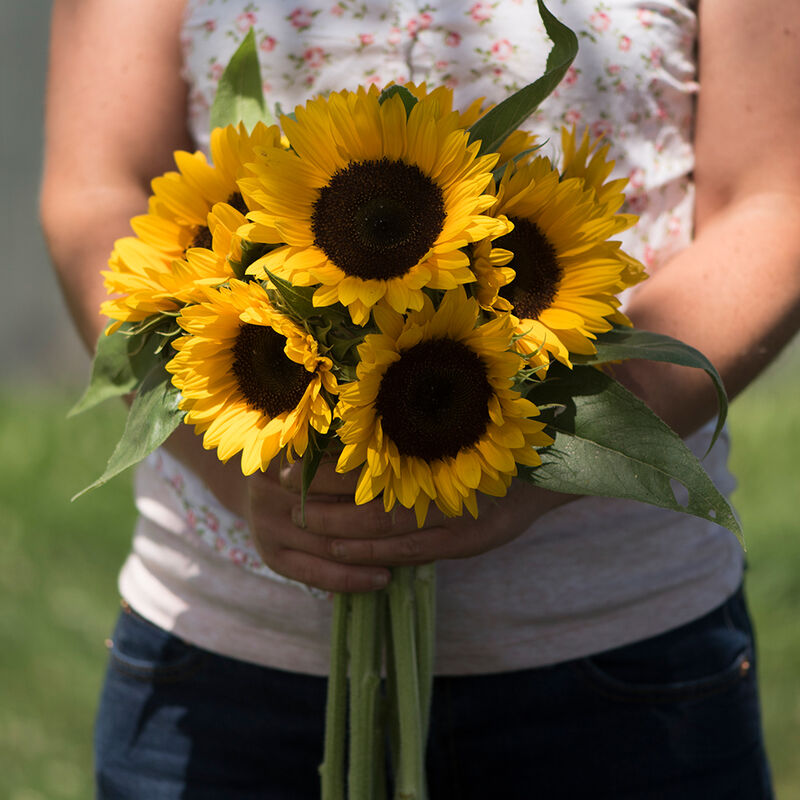Zohar Organic (F1) Sunflower Seed
Product ID:1898G.111898G
Zohar Organic (F1) Sunflower Seed
Product ID:1898G.111898G
An organic sunflower with golden orange petals.
This uniform, early sunflower has 4-6" blooms on long stems. Pollenless. Single stem. USDA Certified Organic.Specs:
- This product does not ship to the following countries: Austria, Australia, Belgium, Bulgaria, Cyprus, Czech Republic, Germany, Denmark, Estonia, Spain, Finland, France, United Kingdom, Greece, Croatia, Hungary, Ireland, Italy, Japan, Republic of Korea, Lithuania, Luxembourg, Latvia, Netherlands, New Zealand, Poland, Portugal, Romania, Sweden, Slovenia, Slovakia, Taiwan, Ukraine.
DAYS TO GERMINATION:
7-14 days at 70-75°F (21-24°C)SOWING:
Direct seed (recommended) - After last frost, sow 1/2" deep. Transplant - Sow into 72 to 50-cell flats 2-3 weeks prior to planting out. Plants dislike root disturbance, but sowing indoors and then transplanting the first crop outdoors can be a successful way to get first-early sunflowers. Do not pinch plants. Pinched single-stem sunflowers will produce low-quality blooms or no blooms at all. Succession-sow every 1-2 weeks and/or plant multiple varieties with varied days to maturity for continuous harvest.LIGHT PREFERENCE:
Sun.PLANT HEIGHT:
Varies.PLANT SPACING:
4-6".HARDINESS ZONES:
Annual.HARVEST:
Flowers can be harvested tight, when color first shows, or when almost completely open, depending on your market and preferred use. Dried - Flowers are completely open. Hang or use silica gel.SOIL REQUIREMENTS:
Light, well-drained soil. Excessive nitrogen may cause plants to grow too vigorously with abnormal flower shapes.NOTES:
Flower size and stem diameter are controlled by plant spacing, temperature, soil type, and day length. For early and late season production, select varieties that are day-length neutral or are noted as suitable for flowering under short days.USES:
Excellent cut flower or for gardens.Johnny's is committed to your success, every step of the way.
We want you, our customer, to be 100% satisfied with all of our seeds, tools, and supplies.
If anything you purchase from us proves unsatisfactory, we will either replace the item or refund the purchase price.






